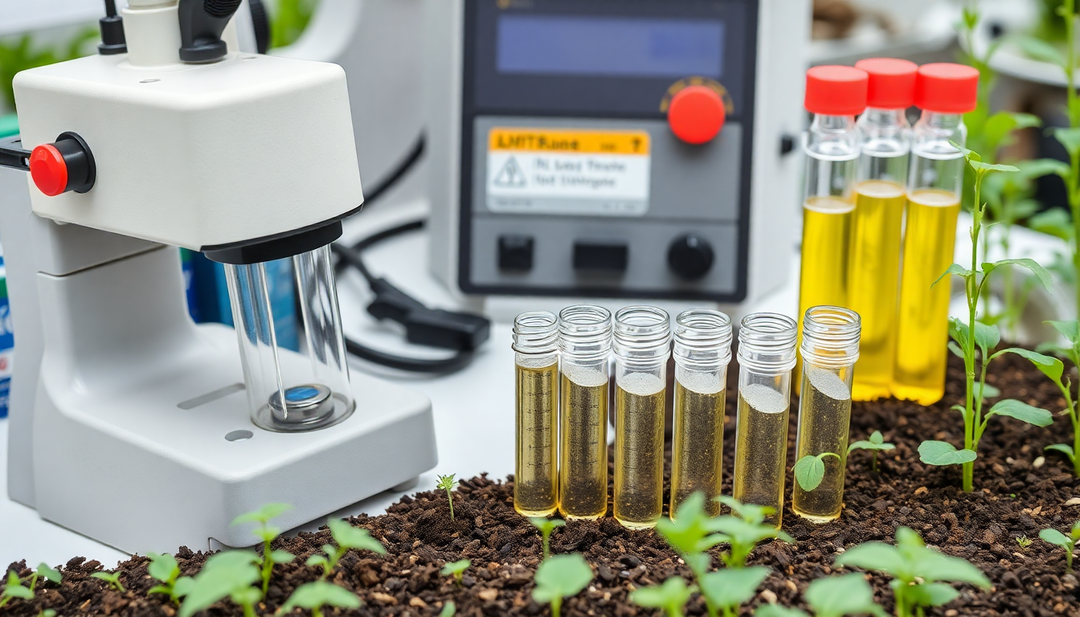Soil Analysis: Understanding the Methods and Costs in 2025 for an Effective Environmental Diagnosis

Introduction
In 2025, soil testing has become a major issue for environmental protection and public health. Whether you're an individual planning to build a home, a farmer concerned about the quality of your soil, or a construction professional, understanding the methods and costs associated with these analyses is essential. In this article, we'll explore the importance of soil testing, the different techniques available, the associated costs, and practical advice for navigating this complex field.
The importance of soil testing
Soil testing can detect potential contaminants and assess overall soil health. Here are some key reasons why these tests are vital:
- Contaminant Detection: The presence of harmful substances such as PCBs, HCTs, PAHs, and BTEX can have a devastating impact on the environment and human health. Effective soil testing allows you to measure these contaminants and take appropriate action.
- Biodiversity Preservation: Healthy soils promote biodiversity, while contaminated soils can lead to the loss of flora and fauna. Analysis helps preserve local ecosystems.
- Assessing agricultural land quality: For farmers, knowing the composition and health of the soil is essential to maximize production and avoid economic losses.
- Regulatory Compliance: Environmental regulations often require soil testing prior to development or construction. Complying with these laws is crucial to avoid penalties.
Soil analysis methods
There are several methods for analyzing soil, each with its own advantages and disadvantages. Here's an overview of the main ones:
- Chemical analysis: This method detects metals in crude and eluate samples, as well as other chemical contaminants. Common tests include heavy metal, nitrate, and pH analysis.
- Physical analysis: This focuses on the texture, structure, and particle size of the soil. Tests such as determining porosity and compaction are crucial for understanding how the soil will react to water and cultivation.
- Biological analysis: Assesses the presence of living organisms and the biological state of the soil. This includes analysis of microbial biomass and the diversity of species present.
- Laboratory testing: Samples are sent to specialized laboratories for detailed analysis. This allows for accurate results, although it can be a lengthy and expensive process.
- Field tests: Rapid analyses can be performed directly in the field for preliminary assessment. However, these tests are often less accurate than those performed in a laboratory.
Costs of soil testing in 2025
Soil testing costs can vary considerably, influenced by several factors:
- Type of analysis: Chemical analyses are generally more expensive than physical analyses. For example, a complete heavy metal analysis can cost between 300 and 800 euros, while a texture analysis can be performed for less than 150 euros.
- Site complexity: If the site shows signs of contamination, additional testing will be required, increasing costs. A comprehensive study of a contaminated site can cost several thousand euros.
- Geographic location: Rates may vary depending on region and lab availability. Rural areas may have additional transportation costs, while larger cities may have competitively priced labs.
- Number of samples: The more samples you have to analyze, the higher the total cost will be. It is often cost-effective to group several analyses together to reduce costs.
On average, the cost of a soil analysis can range from 150 to 1000 euros, depending on the parameters to be tested and the complexity of the site.
Case studies
Here are some examples of successfully completed soil analyses:
- Industrial site: An analysis using Certiscore identified contaminant levels well above standards, leading to remediation measures. Thanks to the analysis, corrective actions were taken, thus avoiding a major environmental crisis.
- Construction Project: Before construction began, a soil study revealed heavy metal contamination. This allowed for revised construction plans and decontamination measures, avoiding future decontamination costs.
- Residential Property: A private individual had their garden tested due to concerns about past pesticide use. The results helped assess risks and adopt healthier gardening practices.
Practical advice for individuals
For individuals concerned about soil analysis, here are some practical tips:
- Hire professionals: Working with soil testing experts is essential to ensure accurate results. Check the certifications and experience of the labs you're considering.
- Educate yourself about the methods: Understanding the different methods available can help you choose the one that best suits your specific needs. Don't hesitate to ask professionals questions.
- Schedule your tests: If you know you'll need soil testing, schedule it in advance. This will allow you to factor in costs and get the results on time.
- Stay informed: Legislation and standards regarding soil testing are constantly evolving. Stay up to date on new regulations and best practices.
- Educate yourself: Learn the basics of soil science to better understand the analysis reports and recommendations you may be given.
Conclusion
In short, soil testing is essential for effective environmental assessment in 2025. It not only detects contaminants, but also helps maintain soil health and ensure the safety of construction projects. By understanding the methods and costs, you'll be better prepared to make informed decisions for your environment.
Call to action
For more information on soil testing and to discuss your specific needs, contact us today! At Pouryère , we are committed to providing accurate and reliable testing to help you protect your environment.



